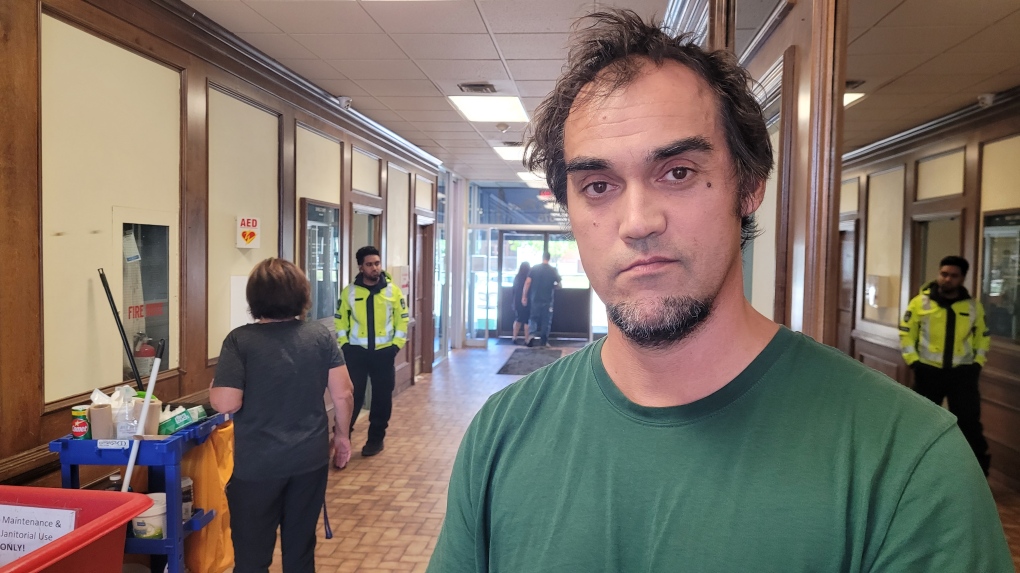Windsor's emergency shelter system nearing capacity — and it's not even winter yet
Described as a "bubble on the edge of bursting," Windsor's emergency shelters are approaching maximum capacity much earlier than expected this year.
Shelter capacity across the system is between 96 and 98 per cent, according to Windsor's housing and homelessness manager, Kelly Goz.
While shelters have dealt with overcrowding before, Goz said the early onset of the crisis in 2024 is alarming.
"That's very different than what we have seen historically for summer months," Goz said.
"Typically, we don't see this type of capacity until it gets cold, unless it's raining, or the climate isn't conducive for folks remaining outdoors."
The numbers were presented during a meeting of Windsor's Community Services Standing Committee, along with a report showing a rise in emergency shelter usage during the first eight months of 2024, compared to the same period in 2023.
"[They] give me a really good snapshot of a bubble that, in my view, is right on the edge of bursting," said standing committee member and Windsor city councillor Fabio Costante.
Goz attributed much of the increase in shelter usage to the Strengthen the Core initiative, which improved communication with those in need and encouraged them to use area shelters.
The initiative also expanded service hours at the city's Homelessness and Housing Help Hub (H4), resulting in more people moving from H4 to other emergency shelters, like the Downtown Mission, later in the evening.
"It's getting the word out, which is wonderful, [but] it is then creating an extra burden on the organizations that provide the services," said Downtown Mission executive director Rukshini Ponniah-Goulin.
"But we're working together to see how we can solve these issues."
One solution the city has implemented is the introduction of crash mats into Windsor's shelters.
At the Downtown Mission, which has 96 shelter beds and 10 crash mats, the dining room is used as overflow space overnight when regular shelter beds are full.
"Last summer, our shelter was probably, on average, about 70 per cent full," said Ponniah-Goulin. "This summer, I started asking why we are having crash mats in July and August. That's definitely new for us."
Kevin Lassaline, a guest of the Downtown Mission for the past year, said he "always sees new faces" coming through the shelter.
 Kevin Lassaline. (Sanjay Maru/CTV News Windsor)
Kevin Lassaline. (Sanjay Maru/CTV News Windsor)
"It's too full. It gets worse in the wintertime, unfortunately, because there's more people here," said Lassaline, adding he worries about his fellow shelter guests who may not have access to a bed when winter comes.
"Where are the people going to sleep? I've seen people swollen hands from frostbite and stuff like that."
Goz said the city expects to receive stabilization funding from the federal government to replace temporary COVID-19 relief dollars that previously supported shelter services.
While there is hope for more funding from upper levels of government, city officials remain uncertain about when it will arrive or how much Windsor will receive.
"We're really at the mercy of upper levels of government to come to a consensus on how they want to deliver these programs and what allocations will be provided to municipalities," said Goz.
CTVNews.ca Top Stories

U.S. soldier shot self in head before Cybertruck exploded outside Trump's Las Vegas hotel, officials say
The highly decorated U.S. Army soldier inside the Tesla Cybertruck that burst into flames outside U.S. President-elect Donald Trump's Las Vegas hotel shot himself in the head before the explosion, officials said Thursday.
Possible scenarios that could play out in Ottawa as the Liberal government teeters
Prime Minister Justin Trudeau is said to be reflecting on his future over the holidays after the resignation of his top cabinet minister, Chrystia Freeland, in mid-December. The bombshell move prompted a fresh wave of calls for Trudeau to step down as Liberal leader from inside and outside the caucus.
Toys "R" Us Canada closing 5 stores, expand HMV and add play spaces to some shops
Toys "R" Us Canada says it is closing five Ontario stores and revamping several others as it works to "optimize" its business.
FORECAST Weather warnings issued in 7 provinces and territories
Wintry weather conditions, including heavy snow and wind chill values around -55, prompted warnings in seven provinces and territories Thursday.
Apple to pay US$95M to settle lawsuit accusing Siri of snoopy eavesdropping
Apple has agreed to pay US$95 million to settle a lawsuit accusing the privacy-minded company of deploying its virtual assistant Siri to eavesdrop on people using its iPhone and other trendy devices.
Woman, father killed on New Year's Eve were victims of intimate partner violence: Halifax police
Halifax police are investigating three deaths that are connected – two of which they say were homicides resulting from intimate partner violence – in the city on New Year’s Eve.
Who are Canada's top-earning CEOs and how much do they make?
Canada's 100 highest-paid CEOs earned $13.2 million on average in 2023 from salaries, bonuses and other compensation, according to the Canadian Centre for Policy Alternatives.
Bruce Springsteen says Jeremy Allen White 'sings very well' in upcoming biopic 'Deliver Me from Nowhere'
Bruce Springsteen is singing Jeremy Allen White’s praises for his performance as The Boss himself in the upcoming biopic “Deliver Me from Nowhere.”
Father stabbed while daughter was in the back seat, teen arrested: Niagara police
A man is in critical condition after the 17-year-old driver of the car he was in stabbed him following an argument on New Year's Eve.


































